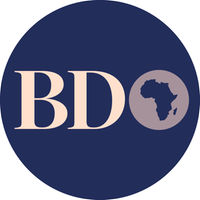
Treasury building. FILE PHOTO | NMG
Summary
Official data by the Treasury shows that debt servicing costs amounted to nearly Sh413.51 billion in the July-December 2020 window against Sh673.61 billion tax receipts.
This means that for every Sh100 collected by the Kenya Revenue Authority (KRA) in the six-month period, an average of Sh61.40 went into servicing debts procured from local and foreign creditors.
Debt repayments gobbled up about 61 per cent of taxes during the first half of the current financial year, even as the Treasury dithered on taking up a relief offer from developed economies.
Official data by the Treasury shows that debt servicing costs amounted to nearly Sh413.51 billion in the July-December 2020 window against Sh673.61 billion tax receipts.
This means that for every Sh100 collected by the Kenya Revenue Authority (KRA) in the six-month period, an average of Sh61.40 went into servicing debts procured from local and foreign creditors.
Tax revenue was hit amidst Covid-19 restrictions and shutdowns that disrupted economic activity, affecting corporate sales and prompting job cuts and salary reductions that in turn eroded consumer purchasing power.
The Treasury, which has since successfully applied for temporary debt relief from the Paris Club of countries, was initially reluctant to take up offers to defer payment of bilateral debt, including Debt Service Suspension Initiative (DSSI) led by a group of the world’s 20 major economies (G20).
The Paris Club handed Kenya a Sh32.9 billion loan repayment break to help ease the financial distresses linked to Covid-19. Kenya has also secured a debt repayment moratorium from China, which will save it Sh27 billion ($245.23 million) in the period to June.
The country widened its debt service relief request to all its bilateral lenders, hoping to save a total of Sh69 billion.
Treasury Cabinet Secretary Ukur Yatani had cited restrictive terms such as limiting Kenya’s access to international capital markets (Eurobond) during the relief period which ends in June 2021 for the reluctance.
The Treasury’s stance, amidst a steady year-on-year drop in taxes since the fiscal year started in July, had elicited criticism from, among others, the outgoing United Nations Conference on Trade and Development (UNCTAD) secretary-general Mukhisa Kituyi.
“The rejection of the DSSI has not in any way slowed down the negative impression of Kenya’s credit rating. The idea that you can cheat the world that you are comfortable because you are refusing cheaper money and then you go and borrow expensive money, to a larger extent, is self-delusion,” Dr Kituyi, who officially leaves UNCTAD on February 15, said in November.
Kenya expects that the successful waivers will free up more cash on the Sh904.70 billion debt repayment budget that it had scheduled for this financial year, with five months to go.
“The initiative, apart from suspending the payments, will give us a total of five years to repay the loans, with a grace period of one year,” Mr Yatani said on January 11.
“This is not only timely, but a sign of confidence in the country and will give us the fiscal space to make the much-needed spending on the Covid-19 economic recovery strategy especially in the social, health and economic sectors.”
Despite a marginal 0.71 percent, or Sh2.95 billion, fall year-on-year in the review period, debt service costs remained the second single-largest expenditure from the exchequer after recurrent expenditures such as salaries, allowances and administrative expenses.
The recurrent costs in the six-month period through December dropped a modest Sh19.87 billion, or 4.14percent, to Sh459.74 billion, the Treasury data shows.
The debt financing costs were also Sh274.16 billion more than the Sh139.35 billion that was channelled to development projects and Sh289.55 billion more than the Sh123.96 billion disbursed to the 47 counties.





No comments :
Post a Comment